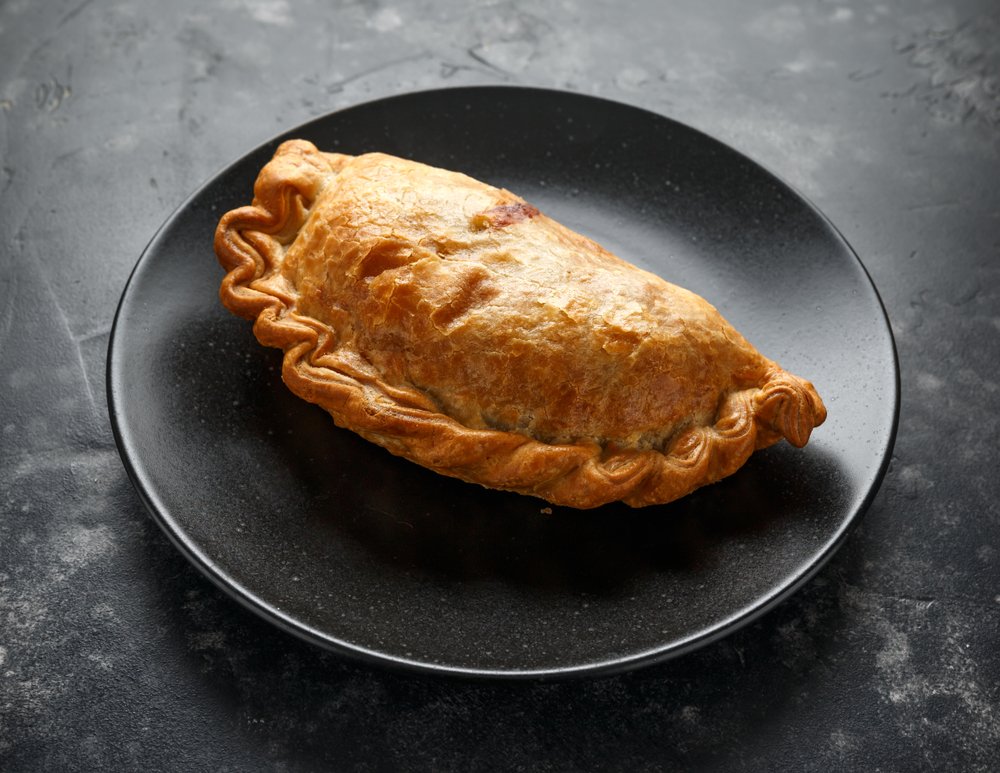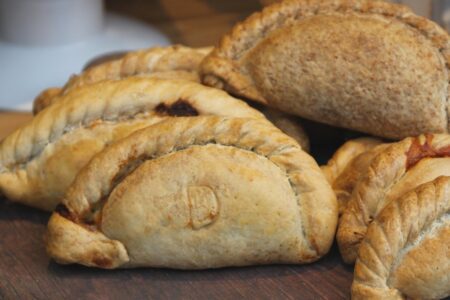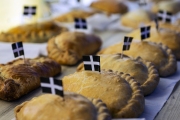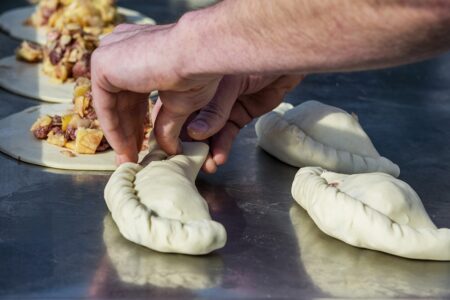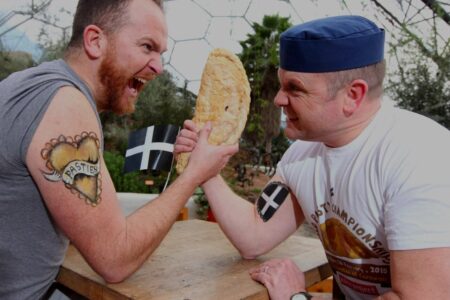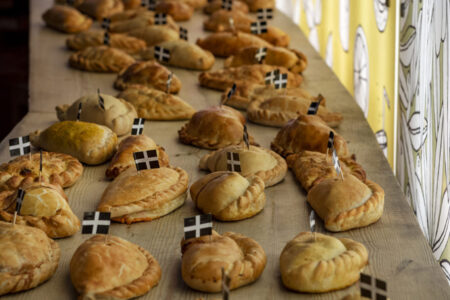No visit to Cornwall is complete without tasting this quintessentially Cornish staple. The Cornish Pasty is unique and there’s a wealth of evidence which suggests the Cornish pasty dates back to the 14th century, during the reign of Edward III. There are early literary references to pasties in Chaucer’s “Canterbury Tales”.
Nobody really knows for sure the true origins of the pasty, but many believe it was the advent of Cornish tin mining in the 19th century that really made the pasty popular and became part of every day life for many Cornish families. Some say a housewife invented the pasty as a handy packaged meal for her husband to take down the mine for his lunch. The well wrapped pasty keeps warm for a very long time.
It is thought that the miners gave the pasty its distinctive D-shape. The crust became the handle, which was later discarded to prevent contaminating the food with dirty hands. Many dispute this, arguing that miners ate their pasties wrapped in muslin or paper bags so they enjoyed every morsal.
What’s inside a Cornish pasty?
Originally the pasty was eaten by poor families and would have been filled with vegetables which were in abundance and meat was added later. A pastry case filled with the traditional ingredients of beef, potato, together with slices of onion and swede.
Surprisingly in a county where the sea plays an important role, fish has never been regarded as an appropriate pasty filling. In fact, fisherman consider pasties at sea bad luck, and superstitious fishermen will refuse to take a pasty on board their boat.
Cornish housewives used to mark their husband’s initials on the left-hand side of the pastry case, in order to avoid confusion. If you could not eat the whole pasty at lunchtime, your pasty was marked and there could be no argument about the ownership of the remaining pasty.
The discussion is endless on the right way to make a pasty and finer points on the filling. Which order should the filling be layered with others saying the filling should be laid out in a particular order? How much beef and whether skirt, chuck or steak is best. How large or small should the beef be cut. Should the pasty be crimped on the top or side and should there be a hole in the top?
The Cornish Pasty has legal protection
Cornish Pasties are sold in nearly every village and town across Cornwall and in 1993 the Pasty was given Protected Geographic Indication (PGI) status. This protects consumers enabling them to distinguish a genuine Cornish Pasty which means that in order for pasties to bear the name “Cornish Pasty” they have to meet very specific requirements.
- They have to be made in Cornwall.
- They can only contain beef, potato, Swede, onion, salt and pepper. No other meat, no other vegetables, no other seasonings are allowed.
- The ingredients must be raw when the pasties are assembled and then slowly baked to produce the traditional Cornish pasty flavor and texture.
- The edges of the pasties must be sealed by crimping them in traditional Cornish fashion.
If you are looking to make a traditional Cornish Pasty at home, then visit the Cornish Pasty Association for the ingredients, recipe and video.
Cornish Pasty Championships
Every year the World Pasty Championships are hosted in Cornwall, inviting entrants from all over the world. Categories include fastest crimper, savoury categories, junior categories along with professional categories. The championships form part of the annual Cornish Pasty Week in February.
